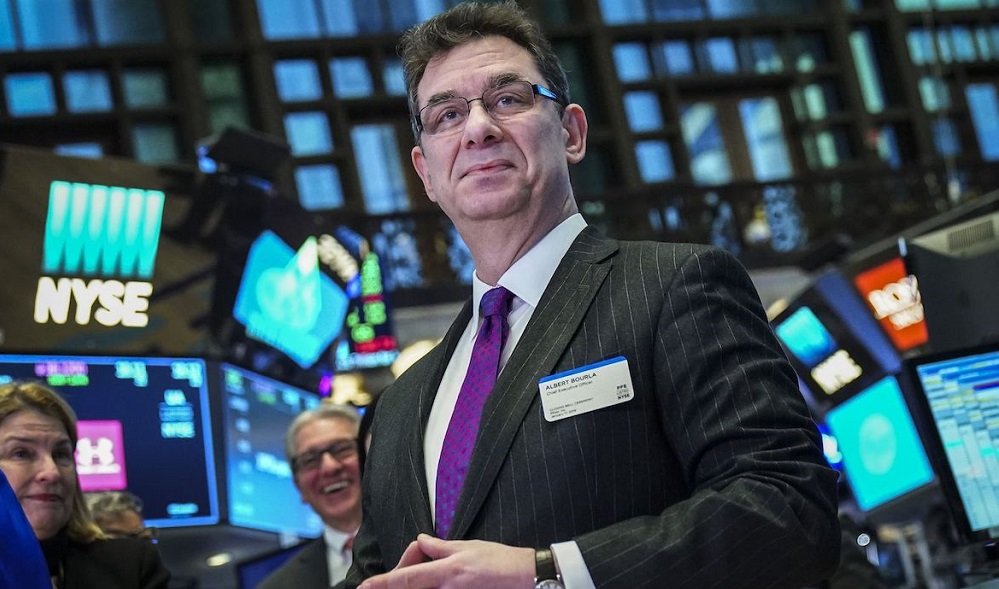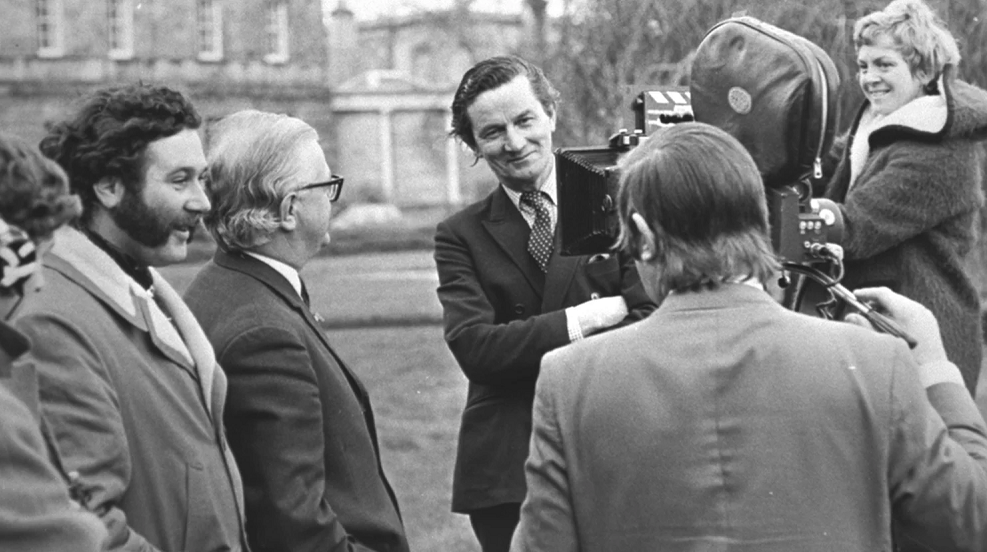ON TUESDAY, Pfizer and BioNTech announced a new Covid-19 vaccine. Pfizer CEO Dr Albert Bourla hailed it as “a great day for science and humanity”. While its safety and effectiveness have yet to be independently approved by medicine regulatory agencies, the signs are promising.
The announcement is undoubtedly good news, but there is at least one major roadblock that now stands in the way of vaccination and the end of Covid-19: uptake.
The Irish Government’s current vaccination strategy appears to be heavily dependent on a short-term plan: make it through winter and spring with the hope that in early 2021, a vaccine is approved and ready to be rolled out throughout the year.
But with this week’s news amplifying public discourse on vaccination and potentially changing the Government’s approach, our health services need to start planning now to ensure the greatest number of people choose to get vaccinated as quickly as possible.
A sceptical public
Pfizer’s press release was barely issued before many in media began asking the public if they would be prepared to take the vaccine.
All national health services, including the HSE, face a substantial challenge convincing a growing, vocal portion of society sceptical of vaccines that Pfizer’s treatment, and whatever other vaccines are approved this year and next, are both safe and efficacious.
A recent survey of the Irish public found that only 55% would take a Covid-19 vaccine. A third were unsure and the remaining 12% said they would not.
While 55% is not an insurmountably low number, without improvement it is still likely much too low for the population to achieve herd immunity. Scientists have suggested that as much as 75% of a country’s population will need to be immunised to ensure virus suppression.

Vaccination leadership
Covid-19 has shone a light on effective leadership and decisiveness has proved the ultimate quality. Swift decisions on lockdowns and related economic and public health measures have been pivotal in controlling the spread of the virus.
Communicating these political and policy decisions has been just as important. Regardless of circumstances, pandemics included, a robust logistical or operational plan is useless if it is not communicated it in a way that makes it understandable and relatable to those expected to follow it.
As we move closer to a national Covid-19 vaccination programme, these qualities will be needed. Inducing any population to enthusiastically embrace mass vaccination is a big ask at the best of times; the flu vaccination, which has been around now for several decades, typically has a 40% uptake every year despite little or no bad press or reputation issues. Even among healthcare workers, the rates of vaccination for flu rarely go above 50%.
To convince as many people as possible to avail of a Covid-19 vaccination, government decision-makers and health service chiefs need to consider these five points:
1. MESSAGING
The fundamental of any successful communications campaign is clear, consistent, and relatable messaging.
Research from Australia suggests that immunisation campaigns that highlight personal stories showing the positive impact of vaccination are more successful in promoting high levels of vaccine uptake than campaigns that are heavy on scientific and medical jargon.
Not everyone sceptical of a Covid-19 vaccine is a conspiracy theorist. Vaccines can take more than ten years to trial and produce; the Pfizer-BioNTech vaccine has taken just ten months. Given precedent, concerns and anxiety are reasonable. The campaign’s messaging will need to acknowledge and assuage these concerns, not dismiss them as paranoia.
2. DATA, DATA, AND MORE DATA
Mobility data from tech giants such as Google has been used to good effect to provide real-time information on compliance with Covid-19 restrictions. Could their data also be utilised to better understand the public’s concerns with vaccination?
These insights, in addition to ongoing market research, will allow communication strategies to be shaped in response to issues as they arise and potentially help to halt the spread of misinformation.
3. LEADERSHIP ACROSS SOCIETY
All our leaders, be they in they politics, healthcare, business, sport, or entertainment, must lead by example and promote vaccination with vigour. We need leaders willing to “campaign” on behalf of the vaccine with the determination and relentlessness they would pursue in their professional lives, be it a general election, the hurling championship, or the promotion of a new album.
Ireland’s political leaders have long successfully championed transformative public health initiatives. Minister for Health Noël Browne’s work to eradicate tuberculosis in the late 1940s and ‘50s, which only a century ago killed up to 5,000 a year, is one standout example, the Taoiseach’s 2004 smoking ban another.

4. ONLINE INFLUENCERS
Just as Elvis’s promotion of the polio vaccine in 1950s America helped immunisation rates skyrocket from under 1% to 80% in just six months, the Covid-19 vaccination will require star power too.
While “influencer” has become something of a dirty word, an overly cynical view ignores the beneficial role that many of them can play—and, indeed, who actually qualifies as an influencer in the first place.
The vast majority of the population under 40 (and many over it) get their information online, and health services must follow them there. Who delivers the message online matters as well, and for many reasons, politicians and medics often won’t cut it.
We already have striking examples of online influencers who have delivered vital public health messages. The hugely brave Laura Brennan, who campaigned tirelessly for HPV vaccination while she was dying from cervical cancer, had cross-generational appeal. She struck a chord with key audiences: young women at risk from cervical cancer, but also their parents weighing up the merits of having their teenage daughters and sons vaccinated against HPV.
5. ONGOING REVIEW
Achieving high levels of vaccination will be a long-term project for public health authorities, so an ongoing review of the communications campaign’s effectiveness must be built in to the process.
This has to happen in real time with, at a minimum, monthly reviews by the campaign implementation team. This will allow the campaign and key messaging to evolve if circumstances change or new concerns about the vaccine emerge.
Transparent uptake targets should be set from the outset, with full accountability on whether they are being achieved. If they are not, new initiatives to get back on track must be quickly developed and implemented. Success can be infectious, too. Publishing weekly vaccination data will create a positive snowball effect and encourage others to get vaccinated.
Yesterday, the Taoiseach announced the securement of up to 3 million doses of the Pfizer-BioNTech vaccine from the European Union. While the prize for achieving high levels of Covid-19 vaccination is obviously huge, the Government shouldn’t expect the population to queue up for their jab without some persuasion.
Starting now, our health authorities need to get to work building a multi-platform, technology-driven communications strategy that gives this century’s most important undertaking yet the best chance of success.

About the author
Amanda leads 360’s policy and campaign teams. She has almost two decades of experience in policy formulation, public affairs, and reputation management. Before 360, Amanda worked with Taoiseach Enda Kenny as an advisor to the Fine Gael frontbench. She is also a qualified solicitor, having practised at Matheson and Arthur Cox, two of Ireland’s largest law firms.
